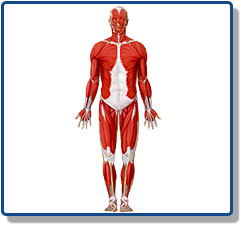

About Electromyography (EMG)Electromyography, or EMG, involves testing the electrical activity of muscles. Often, EMG testing is performed with another test that measures the conducting function of nerves. This is called a nerve conduction study. Because both tests are often performed at the same office visit, the risks and procedures generally apply to both tests. Muscular movement involves the action of muscles and nerves and needs an electrical current. This electrical current is much weaker than the one in your household wiring. In some medical conditions the electrical activity of the muscles or nerves is not normal. Finding and describing these electrical properties in the muscle or nerve may help your doctor diagnose your condition. EMG's may aid with the diagnosis of nerve compression or injury (such as carpal tunnel syndrome), nerve root injury (such as radiculopathy, ie: pinched nerve in the neck or lower back, diabetic & other peripheral neuropathies), and with other problems of the muscles or nerves. Less common medical conditions include amyotrophic lateral sclerosis, myasthenia gravis, and muscular dystrophy.
RisksPeople usually have a small amount of discomfort during EMG testing because of pin insertion. Disposable needles are used so there is no risk of infection. During nerve conduction studies, small electrodes are taped to the skin or placed around fingers. You typically experience a brief and mild shock, which may be a bit unpleasant. Most people find it only slightly annoying. EMG PreparationTake a bath or shower to remove all oil from your skin. Do not use body lotion or powder on the day of the test. On the day of the appointment please bring a list of any medications you are taking, and all insurance cards so that we can make copies. Also if you have a co-pay, deductible, or any other payment previously discussed with you please bring it to your appointment. Tell the doctors if you are taking aspirin, blood thinners (like Coumadin,) or have a pacemaker, or have hemophilia. If you have myasthenia gravis, please call your primary care physician 24-48 hours prior to your appointment and ask him if you should take any medications before your EMG test. If you would like a copy of your test results please inform the doctors' assistant either upon your arrival or directly after your test so she can have you fill out a medical release form and we can get it to you as quickly as possible. If you have any questions please feel free to call our office at 479-251-8055. ProcedureDuring the EMG test, small pins or needles are inserted into muscles to measure electrical activity. The needles are different than needles used for injection of medications. They are small and solid, not hollow like hypodermic needles. Because no medication is injected, discomfort is much less than with shots.
After the ProcedureDr. Johnson or Dr. Estes will share the results with you and answer any questions you may have. The doctors will then share the results with your personal physician with whom you will be referred back to for any future work up or treatment as indicated. Northwest Arkansas EMG Clinic will share the results with your doctor or the doctor who ordered the test. |
site by Astonished Man

